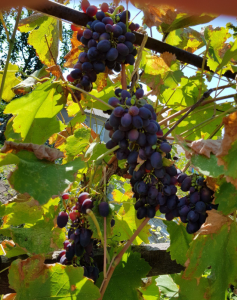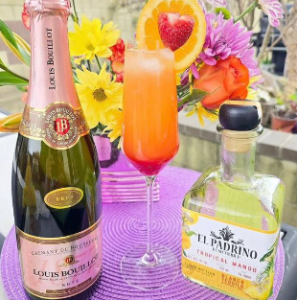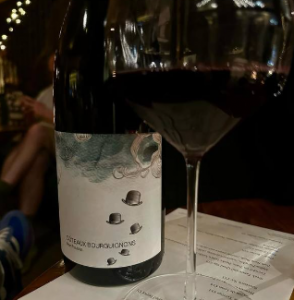
Wine
Vol 26, Issue 24, 19 April 2024
It is an alcoholic drink with a strength of 9-22%, which is obtained due to alcoholic fermentation of grape juice. The most popular of them are Cabernet Sauvignon, Riesling, Chardonnay, Shiraz, Nebbiolo, Merlot. Common grape varieties are grown in almost all wine regions of the world. Shiraz, for example, may be from California, Australia or New Zealand. White wine is obtained from both white and black grapes. Red wine is made only from black grapes. The color of the wine depends on the time of contact of the grape juice with the skin of the berry during the maceration process.

Grape harvesting is increasingly carried out industrially. The bunches are collected from the bushes by a special harvester, which then separates the berries from the brushes and branches. For expensive vintage wines, the grapes are harvested and sorted by hand. For individual varieties of wine, for example Icewine, manual collection and sorting is a necessary part of the technological process. The harvested grapes are pressed with a press so that the bones remain intact and the pulp separates from the skin. The resulting wort is placed in fermentation vats after purification. The vats are made of wood or stainless steel. Their capacity can reach 50,000 liters.
Fermentation or fermentation takes place with the help of specially bred yeast cultures or natural yeast, which are always present on grape berries. During fermentation, a “cap” of fermenting mass particles is formed on the surface of the wort. The longer the contact between the wort and the cap, the more saturated the color of the wine turns out. Therefore, in the manufacture of red wines, the “cap” is specially immersed in wort.

Temperature affects the rate of fermentation. At 12-17 °, fruit flavors are most fully revealed. At the same time, the higher the temperature, the faster the fermentation process goes. The balance between the quality and speed of wine production is set by each producer at his discretion. Fermentation lasts from several days to a month. The sweetness of the wine is influenced not only by the sugar content in the grape juice, but also by when the fermentation process stopped. If fermentation is stopped artificially, then not all sugar will be processed into alcohol and sweet wine will be obtained.
After completion of fermentation, the wine is aged in oak barrels or other containers that prevent oxidation. The aging time for each type of wine is different. During the aging process, harsh tones disappear in the wine, the taste and aroma are more fully revealed. When aged in oak barrels, the wine absorbs tannins from the wood and loses some moisture. 1 gram of alcohol contains 7 calories. Since wine contains both alcohol and sugar in variable proportions, it is a source of calories for the body, and its acidity and tannins contribute to the digestion of abundant food. At the same time, alcohol is harmful to health, regardless of age, gender and individual tolerance level. Nutritionists exclude wine from the list of products necessary in our diet, despite the fact that they recognize its useful qualities when consumed in small quantities. But the art of life gives it a place of honor as a gastronomic product.

Faith and wine
Wine can be called a religious symbol. In antiquity, there were even special gods: in Greece, Dionysus, and in Rome, Bacchus with celebrations-bacchanalia. The Old Testament presents wine as an allegory of Divine mercy, but sometimes exposes drunkenness. In Christianity, this is the First miracle of Christ: the transformation of water into wine at the wedding in Cana of Galilee. Judaism, like Christianity, oscillates between praise and caution against wine. And in the Talmud it is written: “There is no joy without wine.” Kosher wine is used in religious ceremonies during the Sabbath. Islam forbids wine, because The Quran says that the disciples of Mohammed once got drunk and began to make blasphemous speeches, thus prompting the Prophet to give up alcohol altogether. However, there are an incredible number of poems praising wine: the most famous of them are the rubai of the Persian poet Omar Khayyam.
- New Year’s mood - 22nd November 2024
- Minimalism is a way of life. Where to begin? - 15th November 2024
- Why do you need an air humidifier? - 8th November 2024
